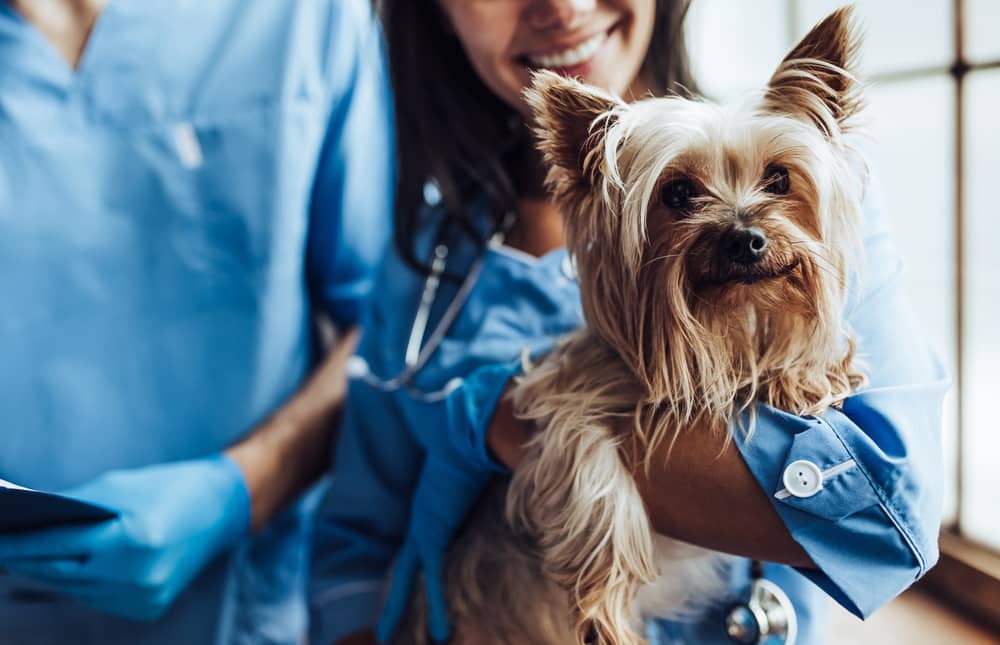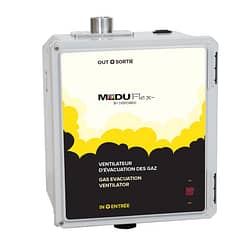
Table of Contents
The Occupational Safety and Health Administration, commonly known as OSHA, is an agency that falls under the United States Department of Labor. Its primary task is to ensure that all Americans have access to a safe work environment. This includes setting regulations and following up with businesses to verify that regulations are being met.
Some states have their own OSHA programs, which replace the function of the federal program in that state. These programs must be approved by OSHA and are required to be at least as stringent as the federal standards.
What OSHA rules apply to veterinarians?
The OSHA rules that apply to veterinarians fall into several broad categories.
First, there are administrative requirements. OSHA requires specific documentation to be kept posted and accessible to employees. Next, OSHA has more specific regulations related to the work that is performed within a veterinary hospital.
These regulations cover topics such as:
- General safety
- Animal handling and restraint
- Infection control
- Bloodborne pathogens
- Hazardous chemicals
- Ergonomics
- Workplace violence
- Fire safety
- Personal protective equipment
- Radiation safety
- Laser safety
- Controlled substances
- Hearing protection
Finally, anything that is not covered in a specific regulation is assumed to fall under OSHA’s General Duty Clause. This clause states that each employer must furnish “a place of employment which is free from recognized hazards that are causing or are likely to cause death or serious physical harm to [its] employees”.
How does OSHA evaluate and reprimand veterinary practices?
The highest priority is given to investigating workplaces with evidence of imminent danger or a history of catastrophic or fatal accidents. The next priority is given to workplaces that have had employee complaints filed. Finally, veterinary practices may be inspected if they meet certain criteria associated with “high hazard” workplaces.
After an initial inspection, workplaces may also be re-inspected to ensure that problems have been corrected.
If a problem is found during an OSHA inspection, the practice will be fined. These fines can vary significantly, depending on the significance of the offense. As of 2016, the maximum fine for most violations was $12,471 per violation. Failing to abate harmful conditions, however, could result in fines of $12,471 per day. Willful or repeated violations carry a maximum fine of $124,709 per violation.
Checklist for OSHA Compliance
The following checklist lists a number of the most common OSHA violations observed in veterinary practices and other businesses. Use this checklist to assess your practice’s level of preparedness.
Administrative requirements
OSHA regulations require a number of documents to be displaced where employees can easily see them, including the following:
- Job Safety & Health Protection Poster (OSHA 3165) or state equivalent
- Copies of all OSHA citations for violations of standards
- Summary of Occupational Injuries and Illnesses (OSHA 300 & 300A)
- Supplementary Record of Occupational Injuries and Illnesses (OSHA 301)
Note: These forms are only required if the practice has 11 or more employees, or has been selected to participate in a Department of Labor study. Workers Compensation forms may be used in lieu of OSHA 301 if the information is essentially the same.
Appropriate warning or identification signs
These signs should be posted at the exits, and in areas where hazardous situations more commonly occur, such as those that require hearing protection.
Areas where radiation and chemotherapy equipment are used should be clearly identified.
Emergency action and fire prevention plans
While many practices have informal, verbal plans, a written plan is required in practices with 10 or more employees. Regardless of the number of employees, veterinary practices should be equipped with functional fire extinguishers and have clearly labeled escape routes.
Chemotherapy
If chemotherapy is performed in your practice, it must be in a single-purpose room. The room must follow these guidelines:
- Sign to clearly identify the room
- Access restricted to only authorized individuals
- Biological Safety Cabinet (BSC) to mix, dilute, or “draw up” chemotherapy drugs
- Spill clean-up procedures clearly posted
- Spill response kit readily available within the chemotherapy room
- Yellow sharps containers in both the BSC and the chemotherapy administration area
- Separate trash and laundry containers
- Eye wash
Keeping food and drinks out of work areas
Food should not be prepared or consumed in hazardous areas. Food preparation areas should not be located near the lab, grooming area, kennel, or other potentially contaminated areas.
Chemical hazards
Employees must be aware of all hazardous chemicals they use at work, as well as how to handle these chemicals safely. Practices must provide the following:
- Written Hazard Communication Plan, including a list of all hazardous products
- Safety Data Sheets for every chemical used in the practice
- Chemical containers (including secondary containers, such as smaller exam room bottles) that are labeled with the chemical name and the appropriate warnings
- Training for workers on the safety aspects of handling the chemicals
Radiation safety
Where radiation treatments are performed, inspectors validate the following points:
- Equipment receives regular maintenance
- Radiation areas labeled clearly: three-blade, radiation caution symbol (magenta or purple on a yellow background) and “CAUTION RADIATION AREA” posted in all radiation areas
- All exposed team members have dosimetry badges, with exposure measurements reported to employees at least once annually
- Appropriate protective equipment is used — lead gloves and aprons are required; thyroid protection is recommended but not required
- Written safety policies, operating instructions, and training programs are provided
Sharps and medical waste
Containers should be clearly labeled, used appropriately, and emptied regularly.
Anesthesia safety
Staff must be appropriately trained on anesthesia safety:
Compressed gas cylinder storage
Gas cylinders should be stored upright and appropriately secured.
First aid
Practices must have the ability to provide appropriate first aid at work, as well as plans for other emergency situations:
- Workplace first aid kit readily available
- Contact info for Urgent Care and EMS posted
Avoiding electrical hazards
Check for inappropriate use of extension cords, surge protectors, etc. Also keep work areas free of clutter to reduce physical hazards.
Violence
Practices should have a plan for how to prevent and address workplace violence.
Noise protection
Ear protection is required in work environments where the sound levels exceed 85 dB. A kennel full of barking dogs can easily exceed this threshold.
- Ear protection available for employees working in the kennel
- Signs posted notifying employees to use ear protection in kennel
Vehicle safety
If you own a large animal practice, or otherwise have employees operating work vehicles, there are a number of regulations related to vehicle operations:
- Drivers must be licensed
- Vehicles must have working brakes, seat belts, etc.
- Back-up alarm required if the driver cannot see out of the rear
OSHA safety training requirements
One OSHA requirement that can be challenging to meet in a busy veterinary practice is that the team receive ongoing safety-based training. It is recommended that practices have monthly safety meetings in order to cover necessary training topics and provide an opportunity for employees to voice safety-related concerns.
Every practice should have a safety training schedule, based on the Hospital Safety Plan. This schedule should be carefully planned and followed to ensure that all relevant safety topics are covered at least once annually. At any given time, a planned schedule should list safety topics that will be covered in the next 6–12 months, as well as when each topic will be addressed.
These trainings must emphasize “concern for the worker’s safety.” As tempting as it may be to relay to the staff that the trainings are being done to meet OSHA requirements, it is preferable to have the staff feel personally involved and impacted by the training.
It is also important to keep records of all training. Each employee’s file should have a record indicating training topics covered. Employees should sign off on trainings, perhaps on an attendance sheet that is circulated at the end of each meeting.
The bottom line
Although OSHA requirements may seem overwhelming, careful consideration of your Hospital Safety Plan and staff training can help address many of the concerns that tend to arise in veterinary practices.
Lists such as the one posted here can play a vital role in ensuring that you have checked for the most common OSHA violations in advance of an inspection.
Sources and additional reading
- AVMA PLIT. 2016. Veterinary Safety Manual. Available at: https://www.tuskegee.edu/Content/Uploads/Tuskegee/images/CVM/AVMA_Safety.pdf
- Dobbs, Katherine. 2014. Safety Protocols in Practice. Veterinary Team Brief. Available at: https://www.veterinaryteambrief.com/article/safety-protocols-practice
- OSHA. 2016. OSHA Fact Sheet: OSHA Penalty Adjustments To Take Effect After August 1, 2016. Available at: https://www.osha.gov/Publications/OSHA3879.pdf
- Seibert, Phil. 2010. Regulations You Need to Know (OSHA) Part 1. Presented at Central Veterinary Conference, Kansas City. Available at: http://veterinarycalendar.dvm360.com/regulations-you-need-know-osha-part-1-proceedings
- Seibert, Phil. 2010. Regulations You Need to Know (OSHA) Part 2. Presented at Central Veterinary Conference, Kansas City. Available at: http://veterinarycalendar.dvm360.com/regulations-you-need-know-osha-part-2-proceedings








